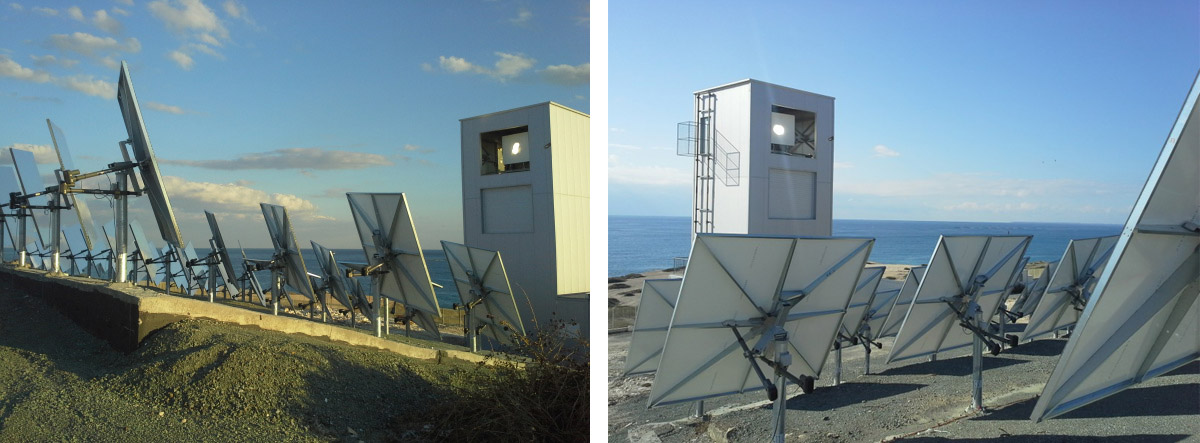
Solar Thermal Technology
Solar energy is the most abundant yet least utilized form of renewable energy. Each hour, the sun irradiates the Earth with more energy than is consumed globally in one year. The potential, therefore, of this source is huge, making it highly appealing for use as a primary energy source.
One of the most interesting utilizations of solar energy is for the production of electricity, which can either be done directly using photovoltaics (PV), or indirectly using concentrated solar power (CSP):
- In the case of PV, the photoelectric effect is used, where certain materials emit electrons when light shines on them.
- In the case of CSP, large areas of mirrors or lenses are used to focus sunlight onto a small target. The target is heated and the heat is subsequently converted into electricity using a heat engine.
Several concentrating solar power technologies have been invented; of these the most developed are the linear Fresnel, the parabolic trough, the dish-sterling and the power tower.
The Parabolic Trough
A parabolic trough consists of a linear reflector with a parabolic profile. The receiver tube is placed at the focus of the parabola, and the parabola can rotate on one axis such that the incoming sunlight is parallel to its axis. A heat transfer fluid is circulated through the receiver tube and is heated by the concentrated sunlight.
The Parabolic Dish
The parabolic dish is similar to the parabolic trough; however the reflector has a paraboloidal profile that focuses onto a point rather than a line. The parabolic trough therefore requires motion about two axes. A heat engine can be placed at the focal point, or a heat transfer fluid may be used to carry the heat to a remotely placed heat engine.
The Fresnel reflectors
The Fresnel reflectors use flat mirror strips to reflect sunlight onto a linear reflector. Each strip can be moved along one axis to always reflect sunlight onto the receiver. The receivers are inspired by the Fresnel lens principle and more reflecting area can be installed on the same amount of space, as compared to the parabolic trough.
The Power Tower
The power tower uses multiple mirrors, called heliostats, to reflect sunlight onto a single point – the central receiver – which is typically elevated above the field on a tower. Each heliostat requires motion about two axes. A heat transfer fluid is circulated through the receiver to carry heat to a remotely placed heat engine.
Heliostats
A heliostat (from Greek helios [ήλιος] meaning sun and stasis [στάσις] meaning to halt motion) is a device consisting of mirrors that turns to redirect the light from the sun onto a fixed target. The heliostat will track the apparent motion of the sun in two independent axes so that the normal of the reflective surface of the mirror is the bisector of the sun-mirror-target angle.
The mirrors used can either be flat or curved. An appropriately curved mirror will focus sunlight at the design distance, increasing the energy density of the solar radiation. Superposition of images from several images further concentrates the sunlight, achieving concentrations on the order of 1000 times the intensity of the sun.
Heliostats are one of the technologies used in concentrated solar power applications to produce electricity from solar power. In commercial concentrated solar power plants, the heliostat field accounts for almost 50% of the total capital cost of the plant.
